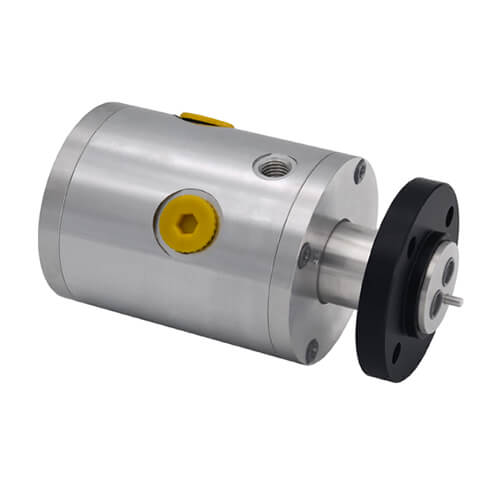In the intricate world of engineering and technology, numerous innovative devices operate behind the scenes, constantly and quietly facilitating our daily activities and contributing to the functional efficiency of diverse industries. An incredibly vital yet relatively veiled component among these numerous technological innovations is the slip ring. While this term may not typically feature in everyday conversations, it holds significant importance in the realm of engineering and electronics due to its ubiquitous applications in varied equipment and mechanisms. Understanding the nuances of slip rings, more specifically, an integral aspect known as slip ring media, becomes indispensable for those who are engaged in industries where rotational machinery plays a pivotal role.
This comprehensive guide aims to break down complex technical jargon into digestible nuggets of information, delivering a detailed understanding of slip ring media. By the end of this guide, readers will be able to comprehend the function and operation of slip ring media, identify different types, and make informed decisions related to their applications. Furthermore, we hope that the insights furnished in this guide will aid individuals and organizations in optimizing their operational efficiency and proficiency, thus realizing the full potential of their equipment involving slip rings.
Understanding the slip ring media is not merely about grasping a theoretical concept or technological component. Instead, it opens avenues for creative solutions, fosters greater control over mechanical operations, and catalyzes innovation. Given its relevance and impact, it becomes even more crucial to delve into the intricacies of slip ring media, thereby unraveling the expansive opportunities it holds. As your companion in this exploration, this guide promises to lead you through each facet of slip ring media, encouraging an in-depth understanding, and thus enlightening your approach towards the practical application of this technology.
Understanding Slip Ring Media
To fully grasp how slip rings work and their essentiality in various mechanical applications, one must first comprehend what slip rings are, their purposes, and their working principles. Slip rings and their media play a fundamental role in the transmission of power and data in systems encompassing rotating devices.
Definition and Function of Slip Ring
A slip ring, as mentioned earlier, is a method used to make an electrical connection between a stationary structure and a rotating structure. It serves as a strategic bridge that interconnects the static and rotating parts of a system or machinery. These devices are integral for rotating systems, which require a constant electrical energy supply. Slip rings provide a seamless, efficient, and continual transmission of power and data signals without restricting or hindering the rotating body’s movement.
In various industries, these rotational movements are essential for maintaining machine operations, hence, slip rings’ significance. The inclusion of the slip ring into such machinery effectively eliminates complications that might arise from twisting cables, ensuring smooth, uninterrupted workflow and improving the machine’s overall efficiency and functionality.
Different Types of Media in Slip Ring
The media in slip rings refers to the kind of energy or signal being transferred between the stationary and rotating components. This media indeed outlines the type of slip ring that you are dealing with. Electrical, fluid, and pneumatic slip rings are the most common types of media in these rotating connection devices, each corresponding to electricity, liquid, and gas, respectively.
Electrical slip rings are designed to transfer electrical signals or power. In contrast, fluid slip rings enable the transmission of specific fluids to the rotating components without interfering with the movement. Similarly, pneumatic slip rings facilitate the transfer of gases, which play a vital role in industries such as pharmaceuticals, food processing, and many more.
Working Principles of Slip Ring
The operation of a slip ring is based on its key components – rotors and stators. Rotors move along with the device, while stators are stationary parts of the system. The media forms a connection between these two components, enabling the functionality of the slip ring.
When it comes to the specifics, the ring is integrated into the rotor which is then connected to the power or data source. This ring revolves around the rotating body. On the other hand, the brushes, a crucial part of the stator, slide on the ring. The brushes then connect to the stationary structure, enabling transmission of power, data, fluid, or gas, from the static component to the rotating part and vice versa.
By understanding the content, definitions, and operational principles included in this section, you will gain more profound insights into the importance of slip ring media in various aspects of mechanical operations. Understanding these fundamental concepts will position you to make better-informed decisions regarding their applications, sparking technological advancements, and innovations in multiple fields.
Common Types of Slip Ring Media
As we delve further into understanding slip ring media, it becomes essential for us to explore the various types of media that are commonly used in these devices. Gaining insights into these media types and learning their distinct features and applications will equip you to select the appropriate media according to the specific requirements of your systems.
Electrical Slip Rings
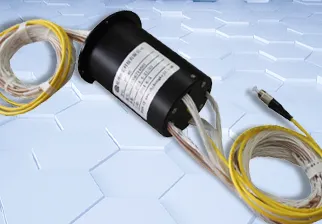
Electrical slip rings are a prominent type of slip ring media that facilitate the transfer of electrical energy and signals between rotating and stationary components. They are primarily employed in devices that require constant electrical energy, such as generators, turbines, and other electromechanical applications. These slip rings are designed with conductive materials like copper or precious metals which, when used as contact materials, help in eradicating signal transmission errors and significantly improve signal quality.
Moreover, electrical slip rings can also be customized based on the number of circuits, voltage requirements, and environmental factors. They are available in various sizes and configurations for diverse applications like robotics, radar systems, and heavy machinery.
Fluid Slip Rings
Fluid slip rings establish connections between rotating and stationary components for transferring fluids, such as gases or liquids. Built with materials that are abrasion-resistant and anticorrosive, these rings are designed to handle specific fluids that might be required in the proper functioning of the machinery. They are commonly utilized in applications where conveying a fluid without restricting or obstructing the rotational motion of machinery components is critically important.
In industries like oil and gas, marine, and chemical processing, fluid slip rings prove to be indispensable elements. They exhibit durability and compatibility with multiple fluid types, as well as resistance to pressure changes and environmental conditions.
Pneumatic Rotary Joints
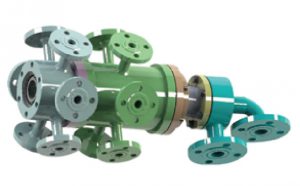
Pneumatic rotary joints specialize in facilitating the flow of gases through the rotating sections of devices, making them ideal for applications where a steady supply of gas is required for uninterrupted operation. These rotary joints exhibit distinct features like corrosion resistance, low leakage, and low-pressure drops, which make them valuable components for ensuring smooth gas transmission.
Pneumatic rotary joints find applications in industrial processes where the gas supply is essential, such as food processing, pharmaceutical manufacturing, and material handling. These rotary joints are constructed with an emphasis on maintaining airtight seals and preventing external contaminants from entering the system. This, in turn, upholds the required standards and regulations for these industries.
MLA Series Pneumatic Rotary Joints
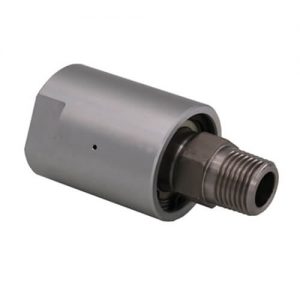
◆ Supported by double high-precision maintenance-free bearing for high stability
◆ High-quality imported sealing parts for prolonged service life
◆ Stainless steel rotor with special treatment to provide good durability
◆ Housing material available in aluminum, stainless steel, or brass
◆ Special leakage reflux design to avoid exterior contamination
◆ Customization available for different applications
| Technical Ratings | |||
|---|---|---|---|
| Max Speed | Max Pressure | Temperature | Media |
| 2000r/min | 1.1 Mpa | -30℃~+80℃ | Air |
MQR Series Pneumatic Rotary Joints
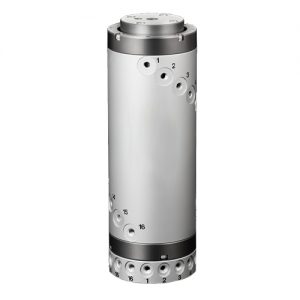
◆ Supported by double high-precision maintenance-free bearing for high stability
◆ High-quality imported sealing parts for prolonged service life
◆ Stainless steel rotor with special treatment to provide good durability
◆ Housing material available in aluminum, stainless steel, or brass
◆ Special leakage reflux design to avoid exterior contamination
◆ Customization available for different applications
| Technical Ratings | |||
|---|---|---|---|
| Max. Speed | Max. Pressure | Temperature | Media |
| 2000r/min | 1.1 Mpa | -10℃~+80℃ | Air |
MP Series Pneumatic/Hydraulic Rotary Joints
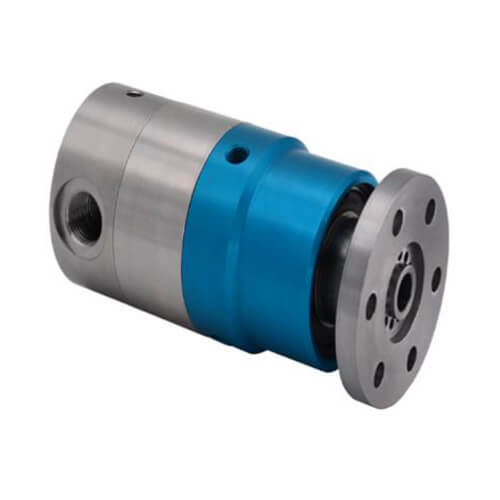
◆ Multichannel mechanical sealing structure suitable for high-speed rotating applications also
◆ Double imported ball bearing for high stability
◆ Multi-spring design efficient spring compensation
◆ Balanced mechanical sealing structure for prolonged service life
◆ Drainage hole design for wearing and leakage observation
| Technical Ratings | |||
|---|---|---|---|
| Max Speed | Temperature | Media | Media |
| 3000r/min | -30℃~+120℃ | Air or Water, Max. Pressure 1.1 Mpa | Hydraulic Oil, Max. Pressure 7 Mpa |
Hydraulic Rotary Unions
Hydraulic rotary joints, also known as hydraulic swivels, is a device that allows the transmission of hydraulic fluid while accommodating rotational movement between two components. Grand supports customized double high-precision maintenance-free bearing with UKS sealing parts.
MH Series Hydraulic Rotary Joints
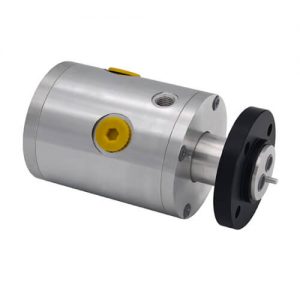
◆ Supported by double high-precision maintenance-free bearing for high stability
◆ High-quality imported sealing parts for prolonged service life
◆ Stainless steel rotor with special treatment to provide good durability
◆ Housing material available in aluminum, stainless steel, or brass
◆ Special leakage reflux design to avoid exterior contamination
◆ Customization available for different applications
| Technical Ratings | |||
|---|---|---|---|
| Max. Speed | Max. Pressure | Temperature | Media |
| 300r/min | 30 Mpa | -30℃~+80℃ | Oil, Air or Similar |
Wind Turbine Hydraulic Rotary Joints
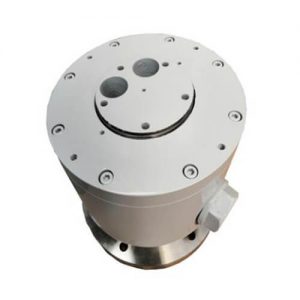
◆ Supported by double high-precision maintenance-free bearing for high stability
◆ Special sealing structure designed for high-speed and high-pressure application that provides prolonged failure-free operation
◆ Low rotation torque
◆ Special structure to be free from friction heat under high-speed
◆ Running torque unaffected by working pressure and temperature change.
◆ Max working speed up to 6500RPM
◆ Drainage hole design to avoid exterior contamination
◆ Customization available for different customer applications
| Technical Ratings | |||
|---|---|---|---|
| Max Speed | Max Pressure | Temperature | Media |
| 6500r/min | 30 Mpa | -30℃~+80℃ | Hydraulic, Oil |
By having a thorough understanding of these commonly used slip ring media types, you can better appreciate their unique features and advantages, thereby optimizing their use in various applications. Considering the coherence of this context, it becomes all the more critical for you to equip yourself with this knowledge, as it will serve as a stepping stone toward success in various industries requiring slip ring media.
Key Considerations When Choosing Slip Ring Media
Selecting the right slip ring media for your application is crucial, as it significantly impacts the performance, longevity, and cost-efficiency of your machinery or device. To assist readers with their buying decisions, we discuss several essential considerations, including compatibility, durability, maintenance requirements, and cost. These factors will ensure that your chosen slip ring media aligns seamlessly with your system requirements while offering optimized performance.
Compatibility
Compatibility is the foremost consideration when selecting slip ring media. The chosen media must correspond flawlessly with the application in terms of power, signal, fluid, or gas requirements. Investigate the operating environment of your machinery, such as temperature, pressure, and chemical exposure, to determine the suitable material and design for your slip ring.
Also, consider any electrical requirements, such as voltage and current capacity, as well as data transmission needs, including data rate and communication protocols. For fluid slip rings, ensure compatibility with the type of fluid to be transmitted, taking into account properties such as viscosity, temperature, and potential for contamination.
Durability
The durability of slip ring media should be considered to ensure trouble-free and long-lasting operation. Evaluate the wear-and-tear resistance, corrosion resistance, and ability to withstand harsh environments. Choose slip ring materials and designs that cater to these performance demands, protecting both your investment and machinery uptime.
Moreover, select slip rings that exhibit low electrical noise, minimal contact resistance, and stable signal transmission, as these features contribute to fulfilling durability expectations in electrical slip rings.
Cost
Cost plays a significant role in choosing the right slip ring media. Factor in both initial investment and ongoing costs such as maintenance, repair, and replacement when calculating the total cost of ownership. Compare different slip ring media types, materials, and designs to find the most cost-effective solution that meets your operational demands without compromising on quality, function, and durability.
While it’s natural to lean towards more affordable options, make sure not to compromise on performance, safety, and reliability, as these parameters have long-term implications on machinery cost and efficiency.
Maintenance
Maintenance requirements are crucial in determining the right slip ring media for your application. Low-maintenance slip rings are advantageous, as they reduce downtime, labor costs, and the risk of operational interruptions.
When evaluating slip ring media, consider factors such as ease of cleaning and replacing parts, the frequency of required maintenance, and the availability of after-sales support. Opt for dependable and accessible maintenance options, ensuring the longevity, safety, and consistency of your machinery’s performance.
In coherence with these key considerations, the selection of the most appropriate slip ring media for your specific application becomes a well-informed and streamlined process. Understanding these factors and their implications will empower you to make cogent decisions, optimizing the performance, reliability, and cost-effectiveness of your devices and systems that employ slip ring media.
Conclusion
Slip rings play a pivotal role in numerous industrial applications where the seamless and unrestricted transmission of power, signaling, fluids, and gases between rotating and stationary components is integral. Our exploration of the common types of slip ring media—electrical, fluid, and pneumatic—has provided insights into their unique characteristics, functions, and usage in various industries.
Whether it’s electrical slip rings with their crucial role in electromechanical devices, fluid slip rings facilitating the transmission of various liquids or gases, or pneumatic slip rings securing a continuous supply of gases, each type of slip ring media has proven to offer unique value.
Moreover, we have delved into the essential considerations when selecting slip ring media: compatibility with system requirements, durability under operating conditions, cost-effectiveness over time, and ease of maintenance. Each of these factors contributes significantly to the performance, longevity, and ROI of the machinery or devices they inhabit.
Next, we turned toward addressing some frequently asked questions to alleviate common concerns and misconceptions about slip ring media. We established that hybrid slip rings can handle multiple types of media, that the generation of electrical noise can be minimized through careful design and material choice, and that slip rings can indeed operate under extreme environmental conditions when designed with appropriate materials and protective coatings.
In coherence with these key points, we hope this guide serves as a comprehensive resource for understanding the intricacies of slip ring media and making well-informed decisions that optimally align with your specific system needs and operational conditions. Whether you’re making a purchase decision or simply enhancing your technical knowledge, the power of understanding these technical nuances will unquestionably steer you toward success.
FAQs about Slip Ring Media
Given the technical nature and breadth of applications for slip ring media, it’s only natural for users to harbor a variety of questions. Addressing these inquiries not only clears common concerns and misconceptions but also enlightens individuals about the full potential and constraints of different slip ring media types. Here we address some of these frequently asked questions, striving for optimal coherence with the previously discussed context.
Q: Can a single slip ring handle multiple types of media?
A: While most conventional slip rings are designed to handle one type of media—be it electrical, fluid, or pneumatic—there are specialized models called hybrid slip rings that can handle more than one type of media concurrently. These hybrid slip rings are designed to facilitate the simultaneous transfer of power, data, and/or fluid, ensuring seamless operation in complex machinery or systems.
Q: Do slip rings cause a lot of electrical noise?
A: The production of electrical noise depends on the quality of the slip rings and brushes and the way they’re engineered. High-quality slip rings designed with careful consideration of optimal contact material and surface coating can minimize electrical noise significantly, ensuring efficient and reliable signal transmission.
Q: Can slip rings operate under extreme environmental conditions?
A: Yes, slip rings can be designed to operate under a wide range of conditions, including extreme temperatures, high pressures, submerged applications, and corrosive environments. Utilizing specialized materials and protective coatings, slip rings can be tailored to withstand demanding environmental scenarios, providing reliable performance regardless of the working conditions.
Q: Are all slip rings essentially the same, differing only in size?
A: No, slip rings vary considerably in design, materials, applications, and performance characteristics beyond just size. While size indeed plays a critical role—especially when it comes to integration within machinery—other aspects like number of channels, type of transmission media, rotational speed capability, and transmission quality are paramount to optimal slip ring function and lifespan.
By answering these common questions concerning slip ring media, we hope to eliminate probable misconceptions and offer users a clearer understanding of these intricate devices. As you delve deeper into the world of slip ring media, such in-depth insight paves a clearer path towards the successful use and application of slip rings in correspondence with your specific requirements and challenges.
See What We Can Do

